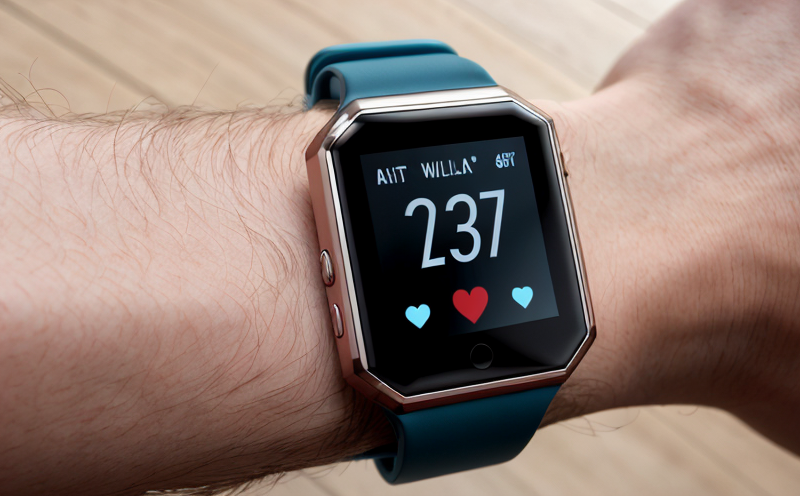Bluetooth SIG Qualification Testing for Wearable Devices
The Bluetooth Special Interest Group (SIG) qualification testing is a critical step in ensuring that wearable devices meet the stringent requirements of the Bluetooth technology. This process not only guarantees compatibility but also ensures seamless integration with other Bluetooth-enabled devices, which is essential for the functionality and reliability of wearables such as smartwatches, fitness trackers, and health monitoring accessories.
The testing involves a series of rigorous procedures aimed at verifying that the device adheres to the specifications outlined by the Bluetooth SIG. This includes checking for proper signaling between devices, ensuring that data transfer is stable and secure, and confirming that the device can operate efficiently under various conditions. Quality managers and compliance officers play a pivotal role in overseeing these tests to ensure that all products meet the highest standards of performance.
The testing process typically involves several stages, each designed to simulate real-world usage scenarios. For instance, the devices are tested for their ability to connect with other Bluetooth-enabled devices under different environmental conditions—ranging from hot and humid climates to cold and arctic regions. This ensures that wearables can function reliably across a wide range of environments.
Another critical aspect of this testing is ensuring secure data transmission. With the increasing focus on privacy and security in health-related devices, it is essential that wearable devices transmit data securely without any risk of interception or unauthorized access. The testing process includes verifying encryption protocols and ensuring that data can be transferred safely over Bluetooth connections.
The qualification testing also involves extensive compatibility checks to ensure that wearables can work seamlessly with various versions of the Bluetooth protocol. This is particularly important given the rapid evolution of Bluetooth technology, which has seen several major updates in recent years. The testing ensures that devices are backward compatible and forward-compatible, allowing for smooth transitions as new standards emerge.
For R&D engineers involved in developing these devices, qualification testing provides invaluable insights into potential issues before products reach the market. This allows for timely adjustments to be made, ensuring that the final product meets all required specifications. For procurement teams, this process ensures that only high-quality components and materials are used, contributing to the overall reliability of the device.
The Bluetooth SIG qualification testing is not just about compliance; it’s about enhancing user experience by ensuring that devices work flawlessly together. This testing process forms a cornerstone of the industry's commitment to innovation and quality, paving the way for a future where health and wellness monitoring can be seamlessly integrated into everyday life.
Applied Standards
The Bluetooth SIG qualification testing is guided by several internationally recognized standards that ensure the highest level of quality and reliability. These include:
- ISO/IEC TR 45710:2022 – Bluetooth Core Specification
- IEEE Std 802.15.1-2020 – Wireless Medium Access Control (MAC) and Physical Layer (PHY) Specifications for the Bluetooth Personal Area Network
- Bluetooth SIG’s own qualification programs, such as BR/EDR and Low Energy Profiles
The standards ensure that all tested devices adhere to the latest specifications of the Bluetooth protocol. This is crucial for maintaining compatibility with other Bluetooth-enabled devices across various industries.
Industry Applications
| Application Area | Description |
|---|---|
| Health and Wellness Monitoring | Wearables like fitness trackers and heart rate monitors are tested for their ability to accurately measure vital signs and provide real-time data. |
| Fitness Devices | Sports bands and smartwatches undergo rigorous testing to ensure they can accurately track activity levels, sleep patterns, and other health metrics. |
| Smart Home Accessories | Devices like smart home locks and thermostats are tested for their ability to connect seamlessly with other Bluetooth-enabled devices within the home ecosystem. |
| Medical Devices | Wearable medical devices, such as glucose monitors and blood pressure cuffs, are evaluated for their compatibility and data accuracy in healthcare settings. |
The Bluetooth SIG qualification testing is essential across a wide range of industries, ensuring that all wearable devices can integrate seamlessly into the broader ecosystem of connected devices. This not only enhances user experience but also promotes innovation by enabling new possibilities for device integration and data exchange.
Use Cases and Application Examples
- Fitness Trackers: Ensuring that fitness trackers can accurately track steps, heart rate, and other health metrics while maintaining a stable Bluetooth connection.
- Smartwatches: Testing smartwatches for their ability to sync with smartphones, receive notifications, and provide seamless integration into the user’s daily life.
- Health Monitors: Verifying that health monitoring devices can accurately measure vital signs and transmit this data securely over Bluetooth connections.
- Smart Home Devices: Ensuring that smart home accessories like door locks and thermostats can connect with other devices in the home, providing a seamless user experience.
The qualification testing process ensures that all these devices meet the highest standards of performance, reliability, and security. This is crucial for maintaining user trust and ensuring that wearable devices continue to play an important role in enhancing daily life.





